In the Iliad, Homer described Mycenae as ‘a city rich in gold.’ It was the legendary home of King Agamemnon, leader of the Greeks who went to Troy to fight the Trojan War. The Greeks of classical antiquity idealized the Mycenaean period as a glorious period of heroes, closeness of the gods and material wealth, as described in the Trojan Epic cycle.
In 1876, amateur archaeologist Heinrich Schliemann set out to prove the historical accuracy of the Iliad by identifying the places described by Homer. Using the text of Pausanias, the second-century A.D. traveller, as his guide, he excavated the site at Mycenae, discovering the deep shaft graves where bodies were buried dressed in lavishly decorated shrouds adorned with gold items and diadems and with their faces covered by masks of gold or electrum (such as the Mask of Agamemnon, below).
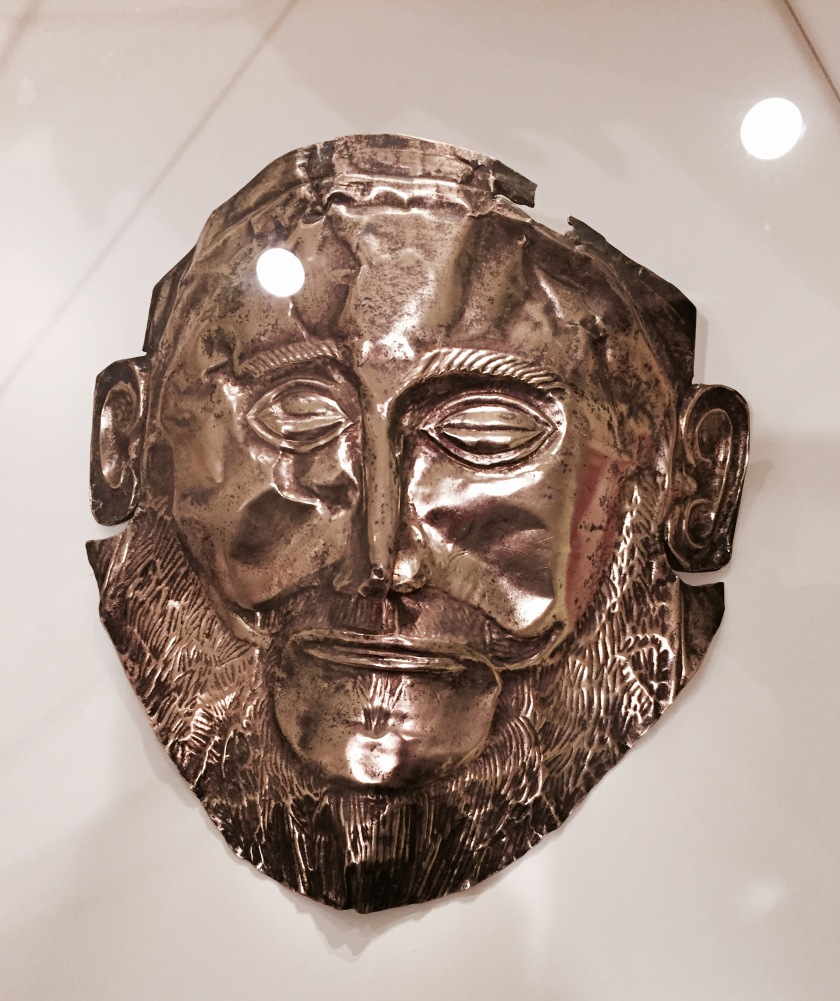
However, the very first excavations at Mycenae were carried out in 1841 by Greek archaeologist Kyriakos Pittakis, who found and restored the impressive Lion Gate, at the entrance to the acropolis.
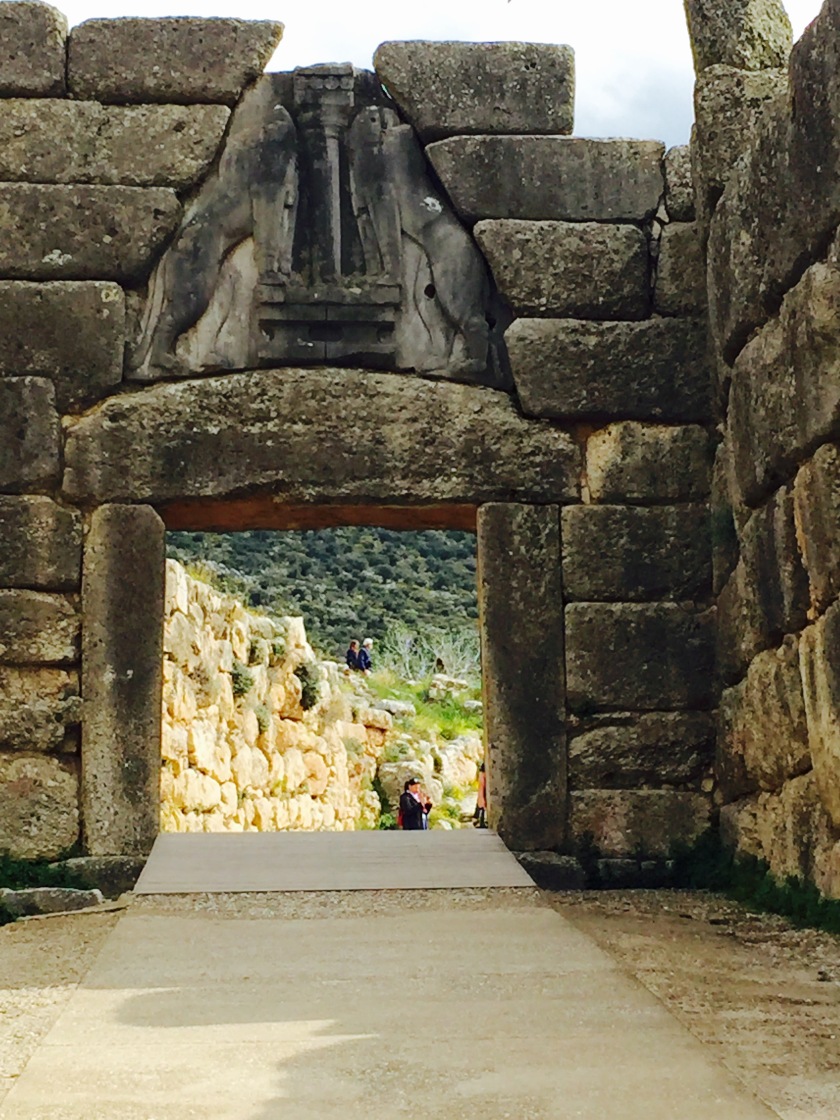
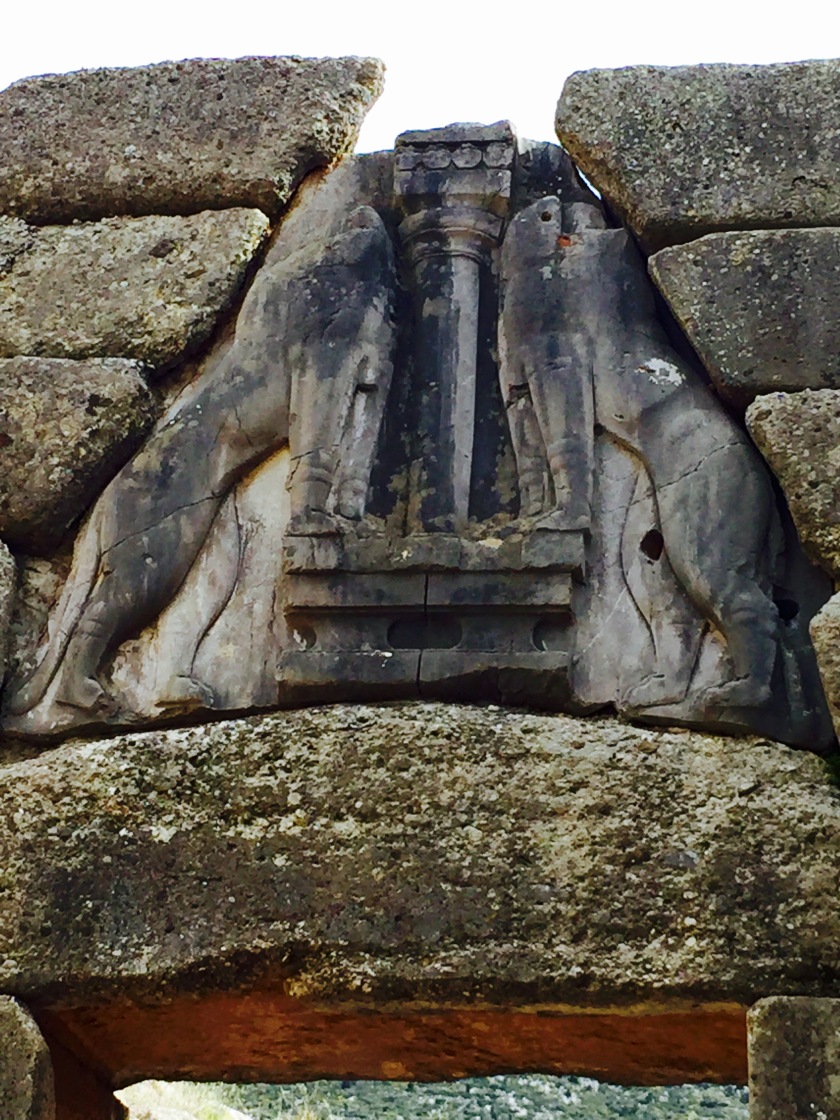
The Minoan civilization (see post, here) was brought to an abrupt end in c. 1500 BC. Historians surmise the palaces were destroyed by fire, earthquake and a tsunami caused by the eruption of the Santorini volcano.
Meanwhile, another brilliant civilization was emerging, that of the Mycenaeans, who set up a number of centers of power in southern mainland Greece. They were a warrior elite society, as is witnessed by their palaces which, contrary to those of the Minoans, featured impressive fortifications.
The Myceneans were much influenced by Minoan Crete, and, after its decline, took control of Crete including Knossos, and colonized several other Aegean islands, reaching as far as Rhodes.
The principal Mycenaean centers were well fortified and usually situated on an elevated terrain. One of their most impressive cities, just 90km from Athens, was Mycenae, or Mykines, as we call it. Built on a tall hill overlooking a fertile plain and the gulf of Argolis and beneath towering peaks, it is the reminder of their glorious civilization.
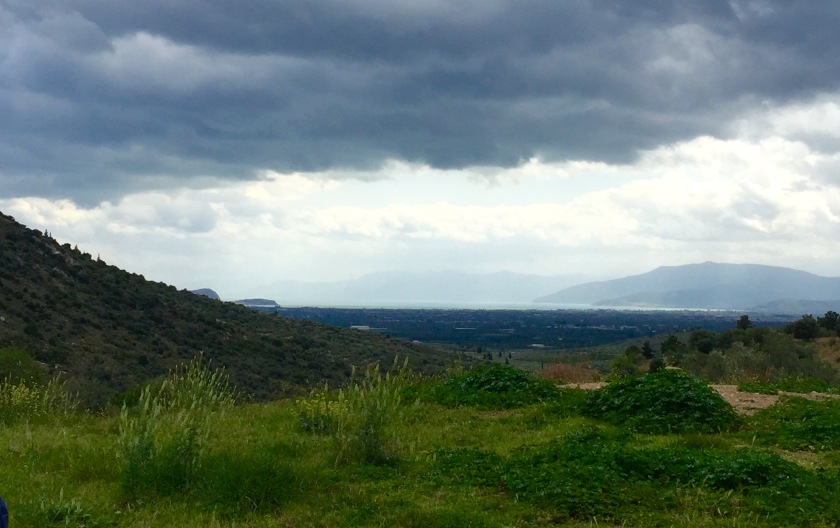
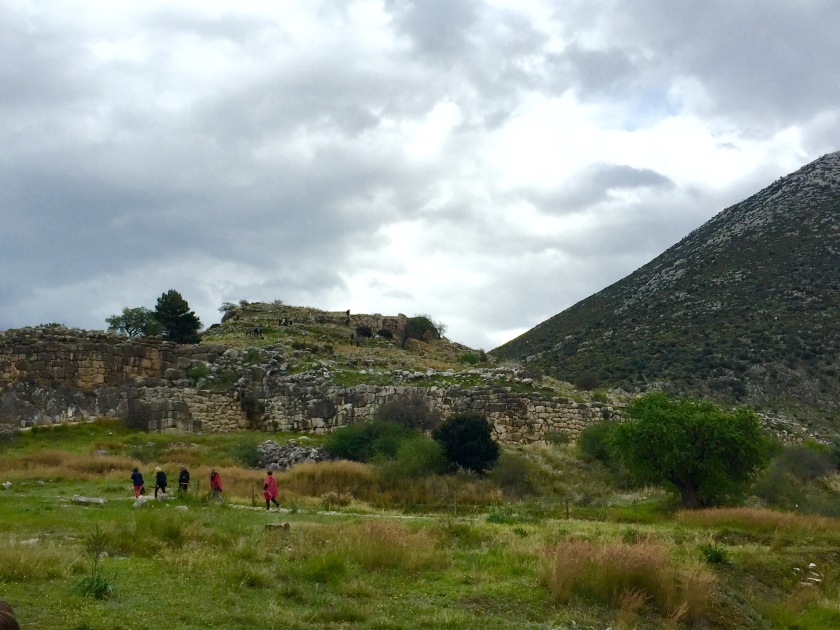
On a recent day trip, we enjoyed the amazing view of the plain stretching beneath the city ruins to the sea. The famous fortifications, know as Cyclopean walls, are built of large, unworked boulders more than 8 m (26 ft) thick and weighing several metric tonnes. They were roughly fitted together without the use of mortar or clay to bind them, though smaller hunks of limestone fill the interstices.
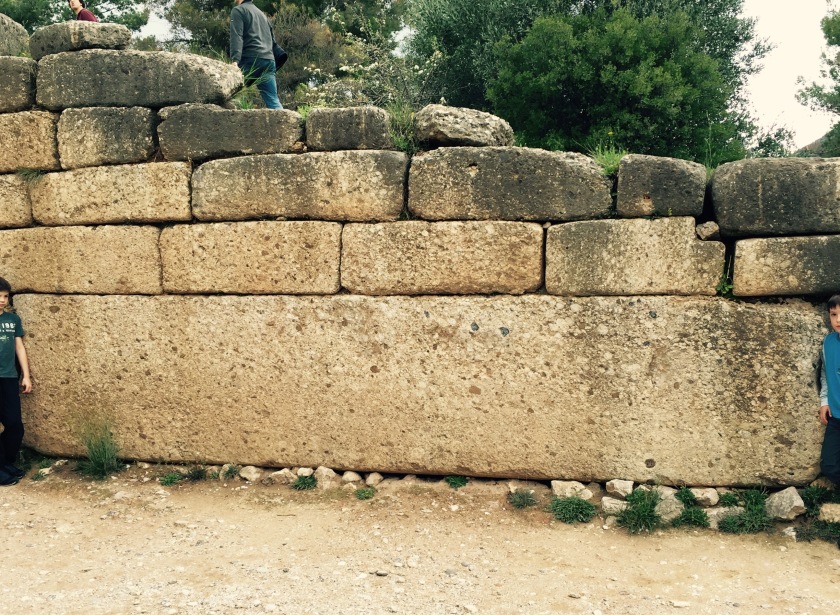
Following the Shaft Grave era, a new and more imposing type of elite burial emerged, resulting in a characteristic feature of the Mycenaean civilization, the Tholos: large circular burial chambers with high vaulted roofs and a straight entry passage lined with stone.
The most impressive of these is the Treasure of Atreas, which might have been the tomb of Agamemnon, or his father, Atreas.
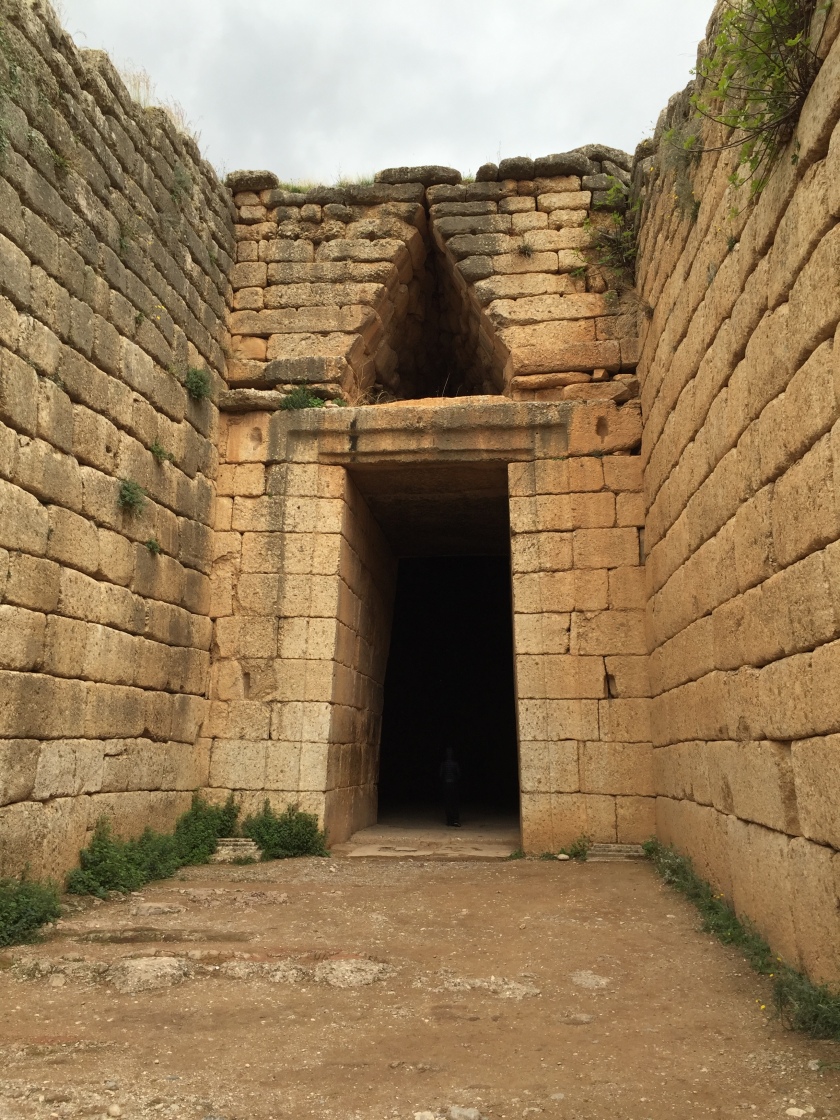
Above the entrance we can see one of Mycenaens’ architectural innovations,the relieving triangle. The Mycenaean Greeks were pioneers in the field of engineering, launching large-scale projects unmatched in Europe until the Roman period, such as fortifications, bridges, culverts, aqueducts, dams and roads suitable for wheeled traffic.
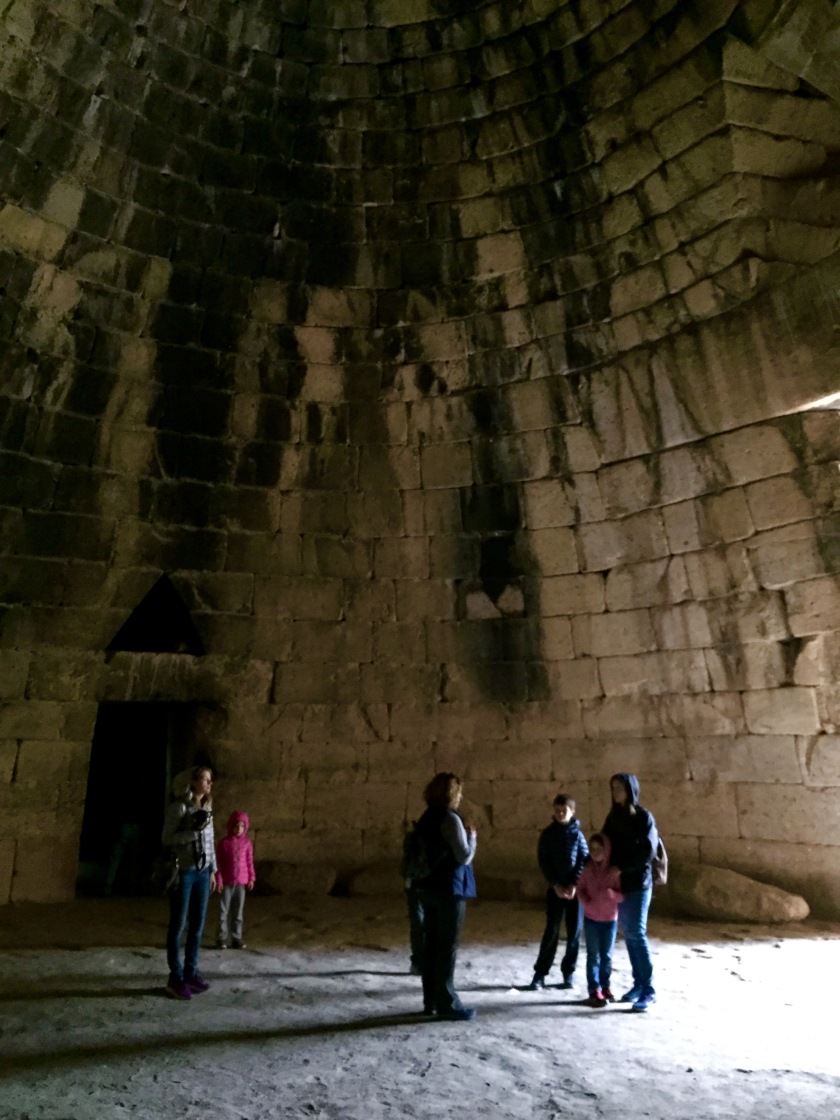
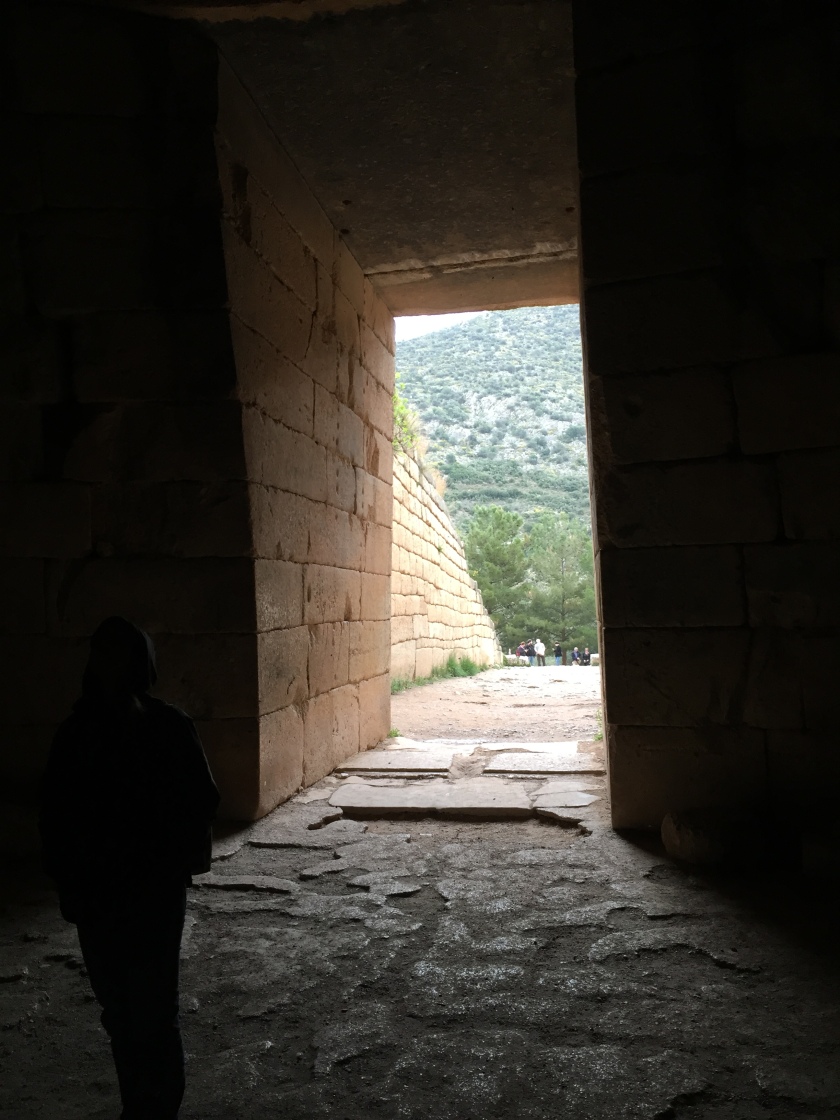
In an amusing footnote, today the Treassure of Atreas is being squatted by a swarm of bees, which obviously appreciate ancient culture as well as the tomb’s resemblance to a giant beehive. These bees are apparently a rare species, so the authorities are unwilling to spray them and are trying to find a way to eject them humanely. The bees are also different in that they don’t sting; when we were there, they were buzzing happily about and did not interfere with our visit in the least. However, it was still April. Apparently in the height of the season, when thousands of tourists are visiting, their numbers are such that most people are scared to enter the tomb. Also, the lure of honey attracts numerous birds and bats, whose droppings result in a filthy floor and an unbearable smell. It will be interesting to see what solution will be found to this problem.
The on-site museum is small but full of treasures.
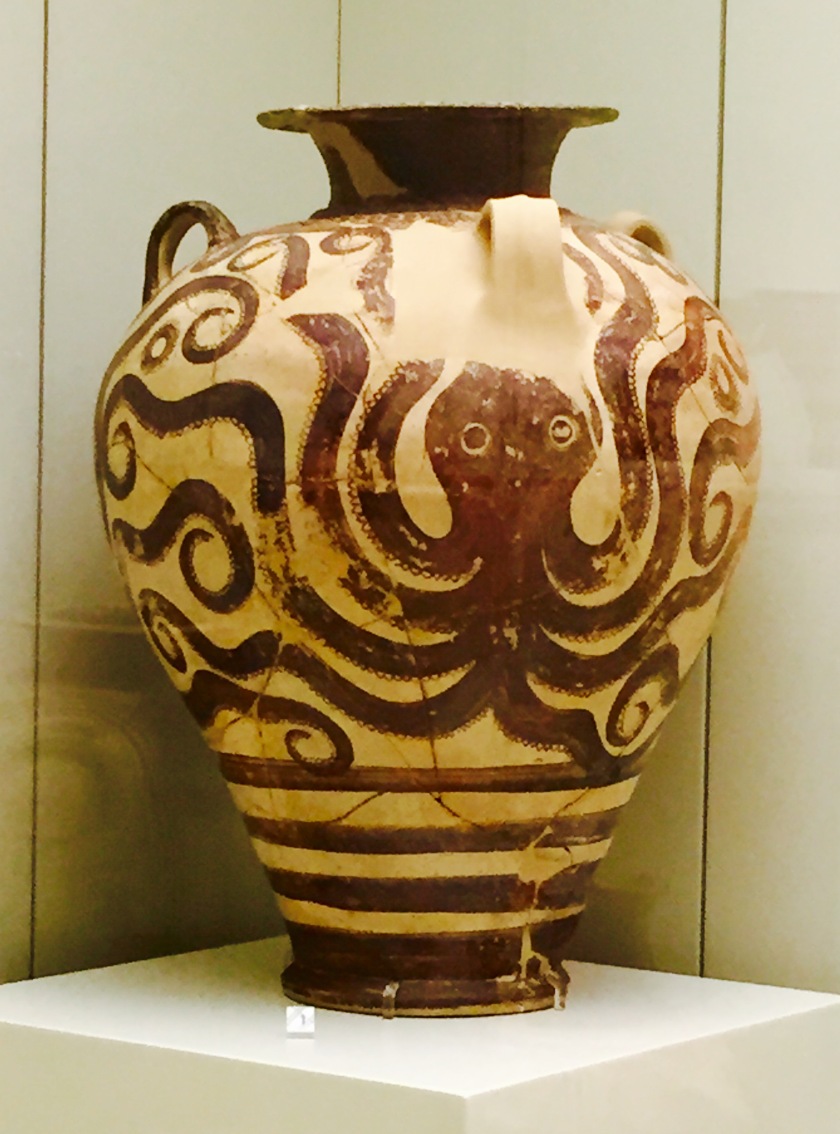
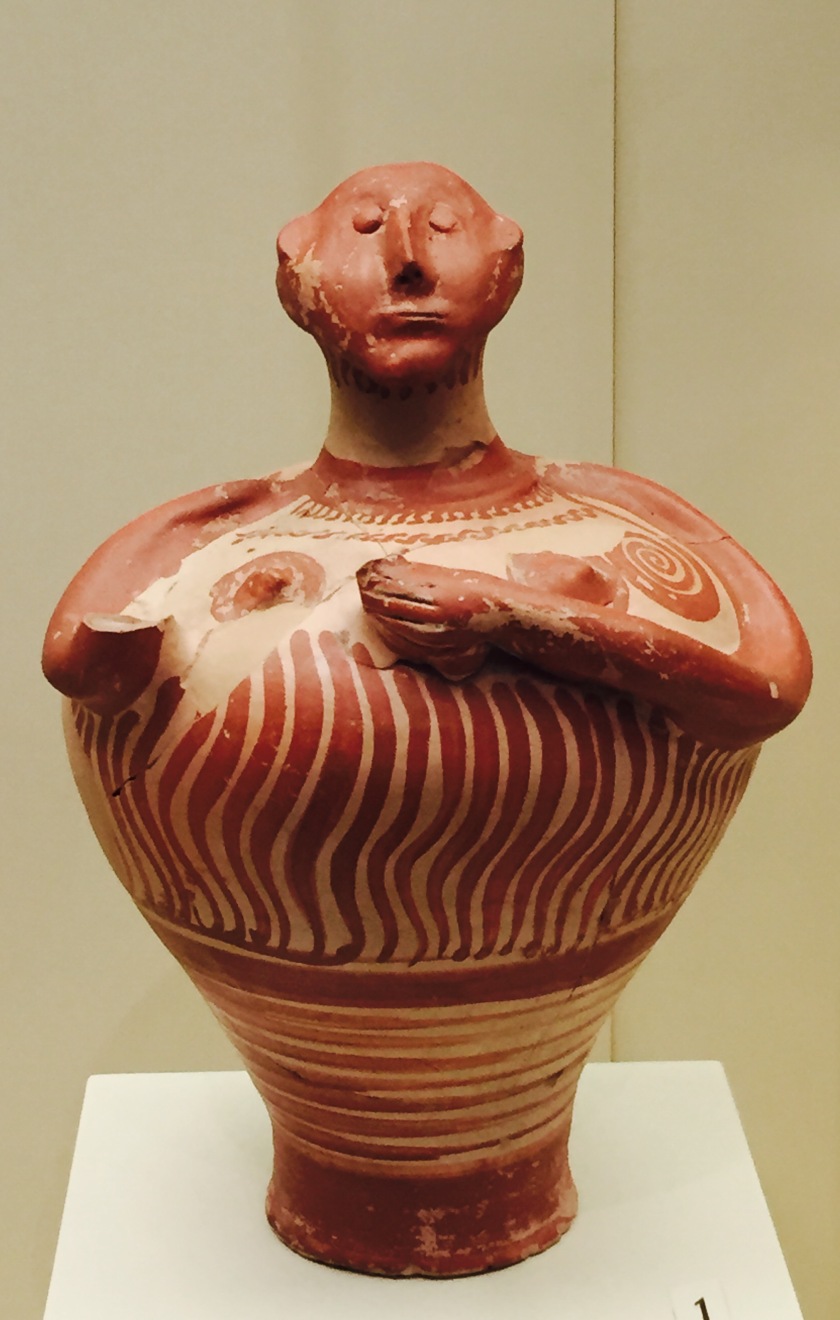
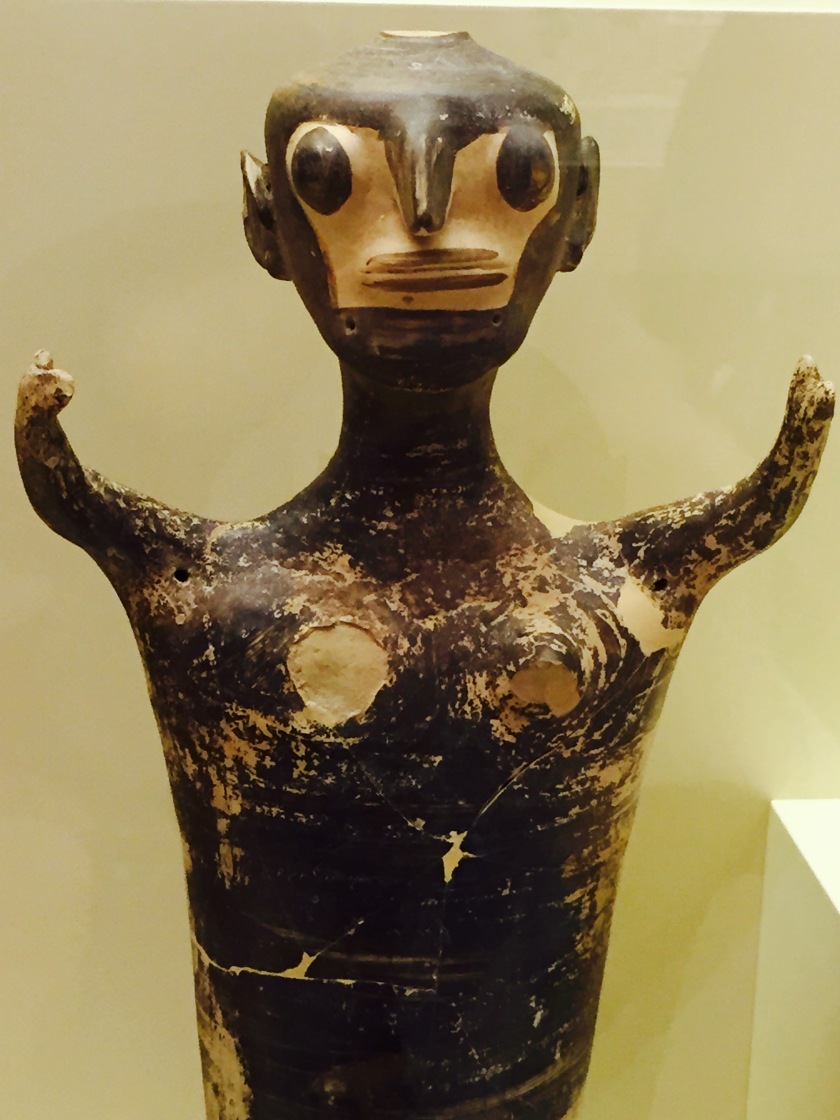
On the way back to Athens, we stopped at the Ancient Theater of Argos, nestled in the hill above the city. The theater was built in the Hellenistic period (third century BC) and had a seating capacity of 20,000. It was remodeled during the Roman period (second century AD) and even today, a number of cultural events are held there.
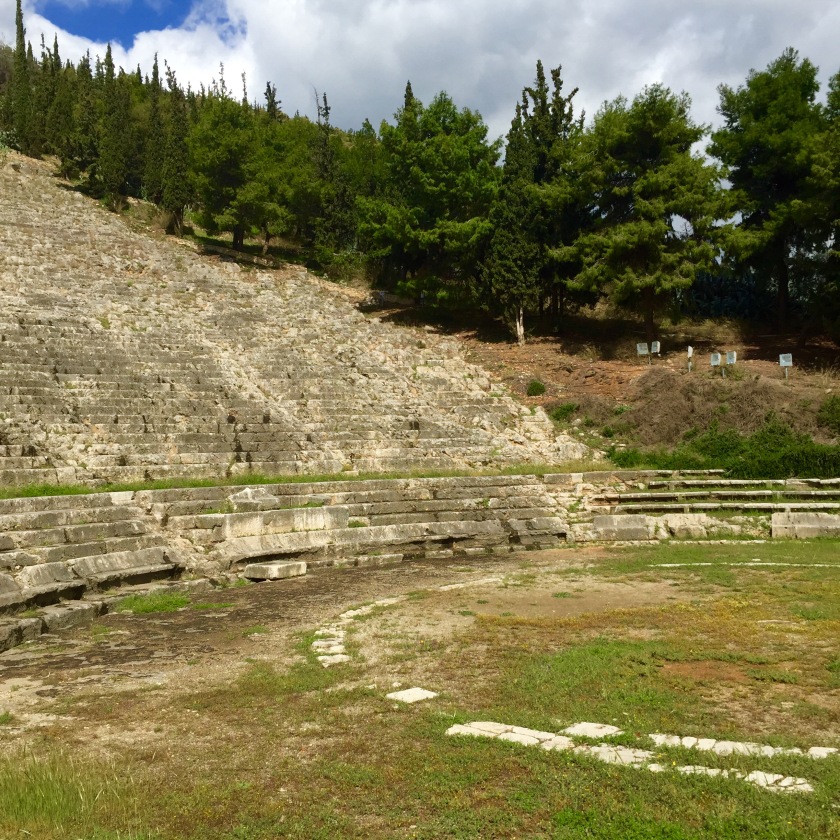
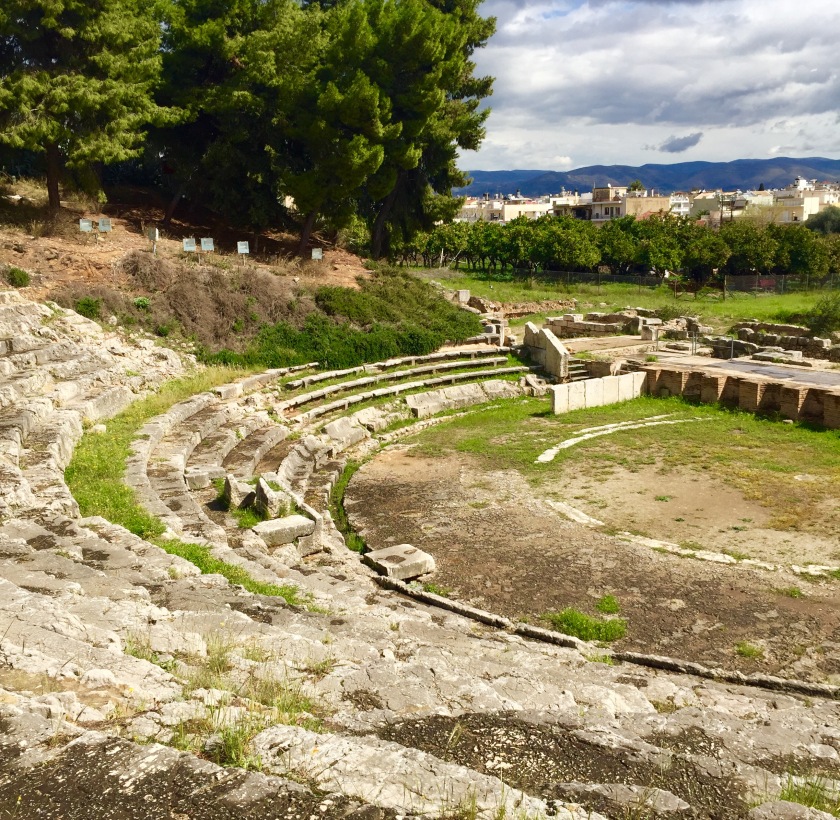


If I didn’t have this pic I wouldn’t know I’d been there 30 years ago. https://everypicturetellsone.wordpress.com/2011/02/18/mycenae-gateway-of-the-lion/
Your pix are brill!
LikeLike
I took them on my phone! Not my strongest point, but they’ll do. Brilliant place, isn’t it?
LikeLike
Marina, I loved this post. I’ve had a deep interest in these two cultures for many years and envy you being able to actually visit. It must have been so special to stand in the same place as ancestors before you stood centuries ago. Thanks for the great photos.
LikeLike
It is special. We’re lucky to have these sites so close to home. I’m glad you enjoyed the photos!
LikeLiked by 1 person
An amazing post Marina! I love the history and the pictures!
LikeLike
Thank you, Lynn! I’m glad you enjoyed it
LikeLike
I went to Mycenae 40 years ago and seeing your pictures brought back happy memories of an amazing place. It was the first time I read Homer and in Greece realised what he meant by describing the sea as “wine dark.” It made me think about my first trip after lockdown and decided to go to Ithaca. I have never been there but am looking forward to visiting the home of Odyssius in September. Hopefully, the Greek government will allow me to visit by then
LikeLiked by 1 person
My grandfather’s family was from Ithaca! I haven’t been in years… 🤞🤞🤞
LikeLike
This brought back memories of my trip to Greece in 1988. So long ago. The bees weren’t in residence then.
LikeLike
They’re a new development. I think if they had been in residence at that time, they’d have been sprayed with some foul chemical without a second thought!
LikeLiked by 1 person
I can only dream of making a day trip to such a place!
LikeLiked by 1 person
Definitely worth it!
LikeLiked by 1 person
Wow! What a remarkable trip. Places like these always take me away to the world I have never seen or even heard about before.
Thanks for taking us along!
LikeLiked by 2 people
I love the pouting pot man. I hope they get the birds and bees thing sorted out before the summer, as it doesn’t sound ideal for either of them at the moment.
LikeLiked by 1 person
Loved it! Also the vase of the octopus and its symbolism! Lovely pictures
LikeLiked by 2 people
Thanks, Peter!
LikeLike
This is such an interesting and thoroughly researched post. I feel much more clued up on that era now. I’ve been to Knossos twice and each time been amazed not just by the site itself but by the atmosphere of it – did you feel that whilst visiting the tomb et? Great photos accompanying the words and I loved the footnote about the bees – I don’t think I’d enter there either with all the noise and smell in summer!
LikeLiked by 1 person
Yes, I always feel amazed to be walked no on the same stones as all those characters of legend and history – even the Gods of Mount Olympus, for sure!
LikeLiked by 1 person
Wow. End of comment.
LikeLiked by 1 person
Very interesting. The birds and the bees present an odd obstacle. 🙂
LikeLiked by 1 person
Thank you for another wonderful tour. That lion gate is impressive and the stonework.
LikeLiked by 1 person
They are, especially when you think when they were made!
LikeLiked by 1 person
WOW
LikeLiked by 1 person
Your country has such a rich and ancient history. It never ceases to amaze.
LikeLiked by 2 people
Fascinating post! I’m so glad they’re trying to find a way to deal with the bees without destroying them, though I must admit I’d be way too scared to go in when they’re at their peak…
LikeLiked by 1 person
Amazing monuments of culture and great views! I need to go there too. Thank you for this inspiring post! 🙂
LikeLiked by 1 person
Fascinating post, Marina. Thanks for taking me along with you. Love that cute alien. 🙂 Schliemann must have been beside himself with excitement when he discovered the graves and artefacts. What a find!
LikeLike
Yes, difficult to imagine – all that gold stuff and huge pots emerging slowly from the dirt.
LikeLiked by 1 person
An excellent post and what an amazing gallery of photos! I’m happy to have just found your blog and look forward to reading more!
LikeLiked by 1 person
Thanks! Will go on to yours ASAP 🌹
LikeLiked by 1 person
Reblogged this on Letters from Athens and commented:
Greece is now opening up its borders to travelers, so if any of you are thinking of taking the plunge, here’s another wonderful place to visit. For the rest, a little more armchair traveling on a ThrowbackThursday, from a trip taken in 2016
LikeLike
I especially like the octopus. They are fascinating creatures. (K)
LikeLiked by 1 person